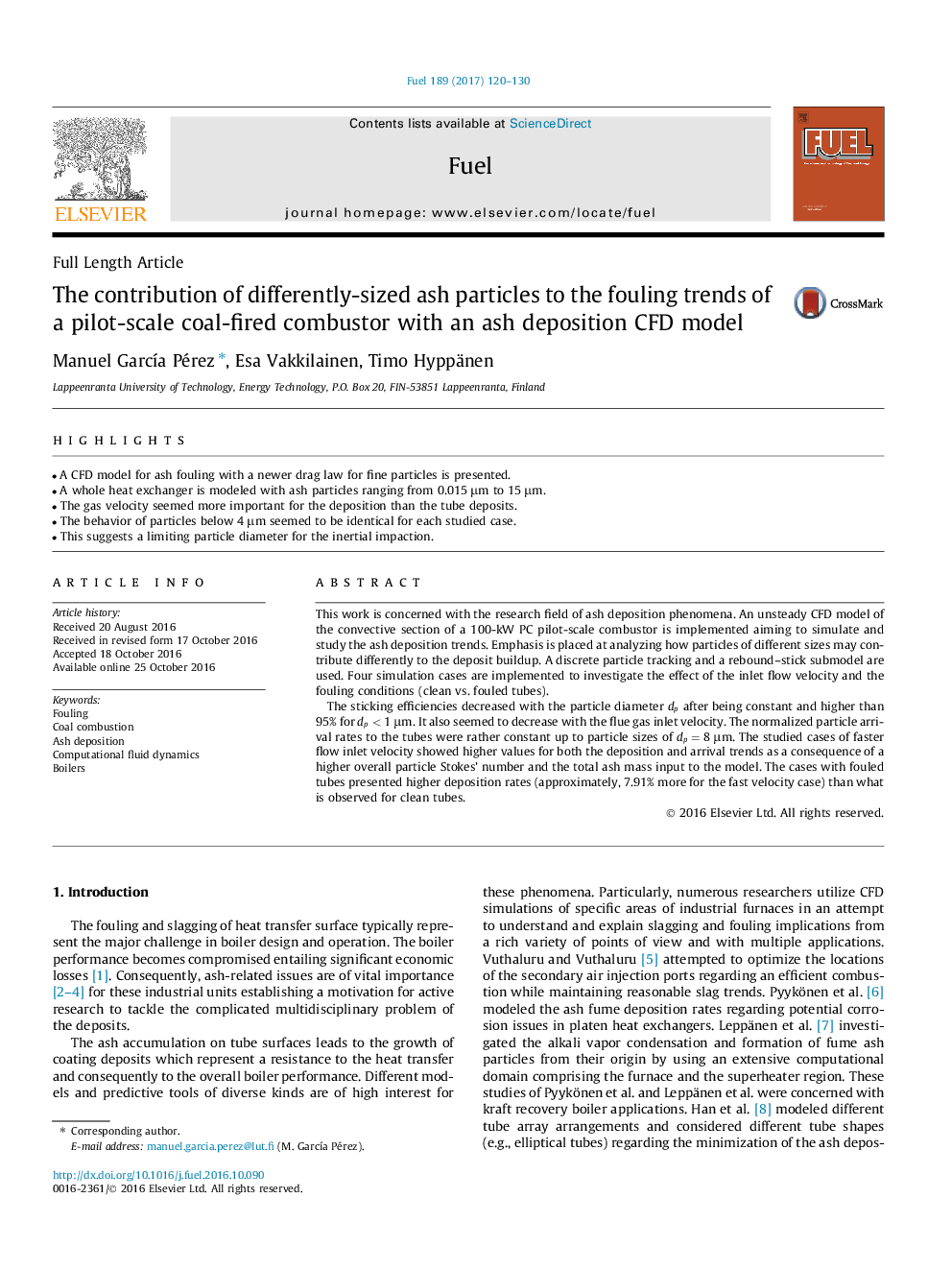| Article ID | Journal | Published Year | Pages | File Type |
|---|---|---|---|---|
| 6475664 | Fuel | 2017 | 11 Pages |
â¢A CFD model for ash fouling with a newer drag law for fine particles is presented.â¢A whole heat exchanger is modeled with ash particles ranging from 0.015 μm to 15 μm.â¢The gas velocity seemed more important for the deposition than the tube deposits.â¢The behavior of particles below 4 μm seemed to be identical for each studied case.â¢This suggests a limiting particle diameter for the inertial impaction.
This work is concerned with the research field of ash deposition phenomena. An unsteady CFD model of the convective section of a 100-kW PC pilot-scale combustor is implemented aiming to simulate and study the ash deposition trends. Emphasis is placed at analyzing how particles of different sizes may contribute differently to the deposit buildup. A discrete particle tracking and a rebound-stick submodel are used. Four simulation cases are implemented to investigate the effect of the inlet flow velocity and the fouling conditions (clean vs. fouled tubes).The sticking efficiencies decreased with the particle diameter dp after being constant and higher than 95% for dp< 1 μm. It also seemed to decrease with the flue gas inlet velocity. The normalized particle arrival rates to the tubes were rather constant up to particle sizes of dp=8 μm. The studied cases of faster flow inlet velocity showed higher values for both the deposition and arrival trends as a consequence of a higher overall particle Stokes' number and the total ash mass input to the model. The cases with fouled tubes presented higher deposition rates (approximately, 7.91% more for the fast velocity case) than what is observed for clean tubes.
